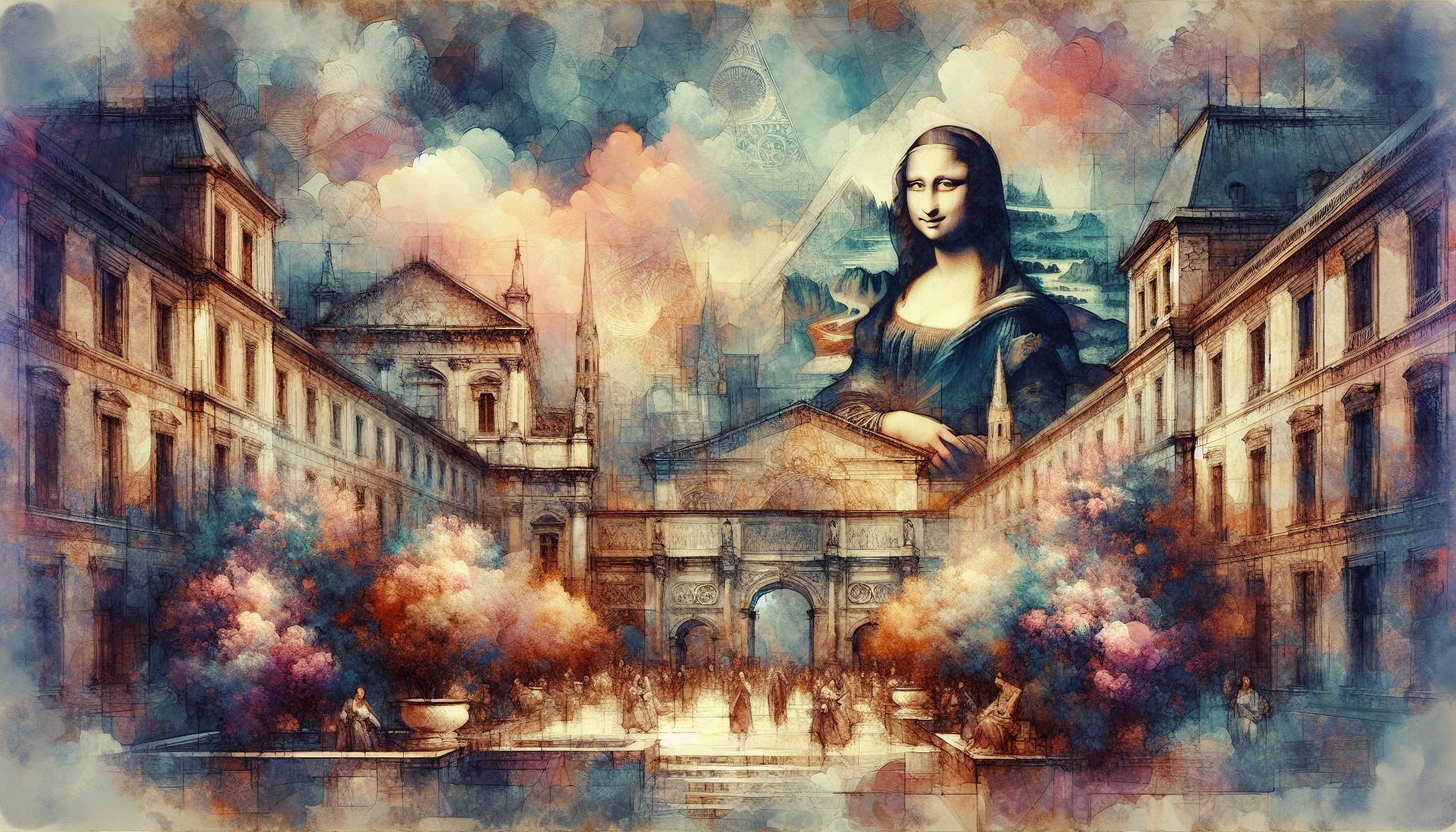Creating Atmospheric Depth with Layered Watercolor Washes
Unlock the magic of atmospheric depth with layered watercolor washes. Transform landscapes into lifelike vistas, mastering gradients and transitions that bring out the beauty of distant horizons. Dive into the art of realism today!

Unveiling Atmospheric Depth with Layered Watercolor Washes
Creating atmospheric depth in a watercolor painting can transform a simple two-dimensional surface into a vibrant, lifelike composition. This technique offers a window into the natural world where the sky isn't just blue but a gradient of diverse hues, the hills fade into lighter tones of gray or blue, and the water seems to layer seamlessly from the shore into the distance. Mastering atmospheric depth with layered watercolor washes is essential for anyone seeking realism in watercolor and wanting to elevate their painting effects to a professional level.
Watercolor washes play an integral role in achieving this depth. They allow us to create gradients, smooth transitions, and a sense of dimensionality. These washes can be built up through various layering techniques, with each layer introducing new elements to the work while interacting subtly with the layers beneath it.
Understanding Atmospheric Depth
Atmospheric depth relies on an understanding of how distance affects color and clarity. In nature, distant objects appear lighter, less distinct, and tend to take on a bluish tint due to the scattering of light by the atmosphere. This phenomenon, known as atmospheric perspective, is something artists strive to replicate with watercolor washes to create realistic landscapes and scenes.
Layering techniques in watercolor involve applying several thin layers of paint to build up color and depth gradually. This is opposed to applying a single, flat wash, which can leave a painting feeling static and one-dimensional. It's through layering that a watercolorist can achieve varied textures, luminosity, and realistic representations of light and shadow.
Foundational Techniques: Watercolor Washes and Layering
Before diving into creating atmospheric depth, it's crucial to master two foundational watercolor techniques: the flat wash and the graded wash. A flat wash covers a large area with a uniform color, while a graded wash transitions smoothly from light to dark or from one color to another.
In both techniques, control of water and pigment ratio is essential. The key is to maintain a wet edge by working quickly and ensuring that your wash area remains wet enough to avoid drying lines that can disturb the fluidity needed for atmospheric effects.
Steps for a Simple Graded Wash:
- Wet the Paper: Begin by lightly wetting the paper with clean water. This helps the paint flow smoothly.
- Mix Your Wash: Prepare a puddle of paint that is just thin enough to flow easily but rich enough to maintain color integrity.
- Apply the Wash: Starting from one edge, paint across the surface, and gradually lighten the pigment by either dipping your brush in clean water or adding more water to your mixture.
- Work Quickly: Keep a continuous wet edge to ensure a smooth gradient without streaks.
- Layer: Once dry, you can add additional layers, allowing each layer to alter the one below subtly.
These simple wash techniques set the foundation for more complex layering that can result in stunning atmospheric depth. Understanding the rhythm between water, brush, and pigment is the bedrock of these visual transformations.
Achieving Atmospheric Depth with Layered Washes
When using layered washes to create atmospheric depth, the key is to think in terms of layers representing different planes of distance in your painting. Start with broad washes for the furthest elements in the background, such as sky or distant mountains, and progressively move towards detailed applications for nearer elements like trees or figures in the foreground.

Step-by-Step Guide to Layering for Depth
Step 1: Background Layer
For the background, choose a light blue or gray wash to reflect the distant sky or mountains. This initial wash should be light and fluid, almost transparent. Because atmospheric depth often introduces a haze or misty quality, applying a very diluted color gives the desired effect of objects receding into the distance.
Step 2: Middle Ground Layer
Once the background layer is dry, begin work on the middle ground — this might include elements such as hills, fields, or forests. Use slightly darker mid-tones for these features, blending colors like warm browns and earthy greens for the closest elements. Make sure to maintain soft edges to keep the elements cohesive and integrated with the distant background.
Step 3: Foreground Details
The final wash layers involve the foreground where you maximize detail and contrast. This is where elements should appear most vivid and saturated. Use richer pigments and finer brushwork to bring features into sharper focus, capturing viewer attention against the softer, receding layers in the background.
Advanced Painting Effects with Watercolor Washes
Understanding how to manipulate wet-on-wet and wet-on-dry techniques enhances the potential of layered washes. In the wet-on-wet technique, dropping in color onto already wet surfaces lets you capture soft blends and transitions. This technique is excellent for skies, where clouds need to appear seamless and soft.
Conversely, wet-on-dry application, where you apply wet layers on a dry surface, sharpens edges and creates contrast, perfect for adding texture and nuance to closer objects in your painting. Balancing these two approaches allows for delicate interplay of sharp and soft details, which is crucial for realism in watercolor.
Conclusion: Mastery Through Practice
Achieving atmospheric depth with layered watercolor washes isn't simply about following a set of steps – it involves a deep understanding of how light, color, and perspective interact in nature. It requires practice, patience, and a willingness to experiment with different paint consistencies and techniques.
By continuously exploring the expressive potential of watercolor washes and refining your layering techniques, you'll develop a more intuitive feel for creating realistic and compelling compositions. The journey towards mastery in watercolor is as much about the skills you develop as it is about the unique artistic voice you cultivate through your understanding of atmospheric depth.
